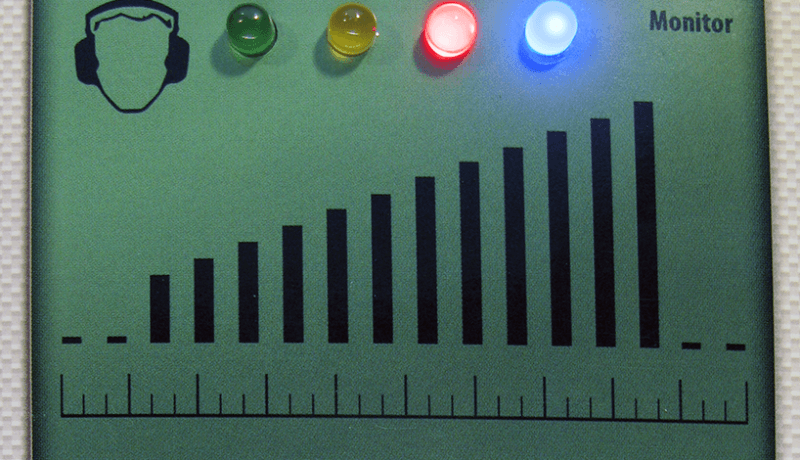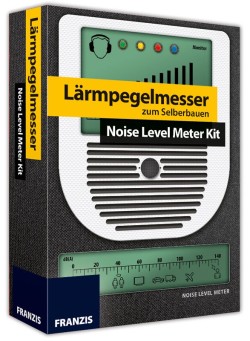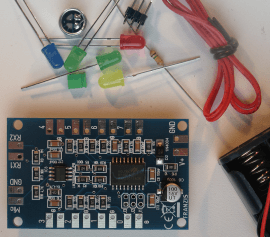Review: (little) Noise Level Meter Kit
January 19, 2017
on
on

 Let’s state at the outset that we are not in the category of “test instruments” here, more in that of educational material. This kit, while it is certainly not in competition with Bruel & Kjaer, is nonetheless not just a frivolous gadget. We see the Maker movement everywhere redoubling their efforts to seduce the young into making, or at least using, electronics. In a profusion of ideas and initiatives, the technical aspects of electronics often seem to be reduced to a kind of often black magic where what counts, it seems, is not so much to understand but more to just make something. The maker fashion is to arouse a taste for technology, especially in the young, but is there enough emphasis on “how it works” and the means of getting there? It is true that the color code is more attractive than Ohms law.
Let’s state at the outset that we are not in the category of “test instruments” here, more in that of educational material. This kit, while it is certainly not in competition with Bruel & Kjaer, is nonetheless not just a frivolous gadget. We see the Maker movement everywhere redoubling their efforts to seduce the young into making, or at least using, electronics. In a profusion of ideas and initiatives, the technical aspects of electronics often seem to be reduced to a kind of often black magic where what counts, it seems, is not so much to understand but more to just make something. The maker fashion is to arouse a taste for technology, especially in the young, but is there enough emphasis on “how it works” and the means of getting there? It is true that the color code is more attractive than Ohms law.We will only be able to judge the fruits of the Maker Movement in a few years time. But in the meantime, is it that different from what’s happened in previous generations? This is not the first time that the grumpy Ancients have quarreled with the insouciant Moderns.
 At first glance, this sound meter kit does not really fit into the “maker” approach, but more into the classic DIY kit, as has existed since 1900 and before….
At first glance, this sound meter kit does not really fit into the “maker” approach, but more into the classic DIY kit, as has existed since 1900 and before….The ambient sound level meter is presented in a solid cardboard box (160 x 110 x 30 mm), with quality color printing, designed to be the case of the assembled device; it’s neat, even showy.
As regards pretty boxes, I’ve always preferred electronics unattired, without a box and especially without a lid. I will content myself with a few spacers on the board to avoid short circuits on the table, but for the rest, an open board, accessible to view, for probes and for the soldering iron. Here I concede willingly that I’m happy with the care taken with the graphics of this cardboard case. Opposite you can see the pre-punched cutouts on the case for the LED indicators and one in the middle for the microphone. There are labels on the paper sleeve that wraps the kit, but not on the box itself. Just at the bottom right is the discreet mention NOISE LEVEL METER. It’s not too bad.
 With this, you receive a PCB of around 6x4 cm on which are already soldered most of the surface mounted components, a handful of through-hole components, a strip of pins and a battery holder. And a very complete manual. The assembly instructions for the kit are aimed at the beginner, as only through-hole components need to be soldered and, even if the microphone or battery connections are reversed by mistake, nothing bad will happen.
With this, you receive a PCB of around 6x4 cm on which are already soldered most of the surface mounted components, a handful of through-hole components, a strip of pins and a battery holder. And a very complete manual. The assembly instructions for the kit are aimed at the beginner, as only through-hole components need to be soldered and, even if the microphone or battery connections are reversed by mistake, nothing bad will happen.No, nothing is missing in the adjacent photo. Contrary to what the pretty decoration on the case leads you to believe, there is no LCD display in this kit. At less than €35 , I guess that’s logical.
Read full article
Hide full article


Discussion (0 comments)